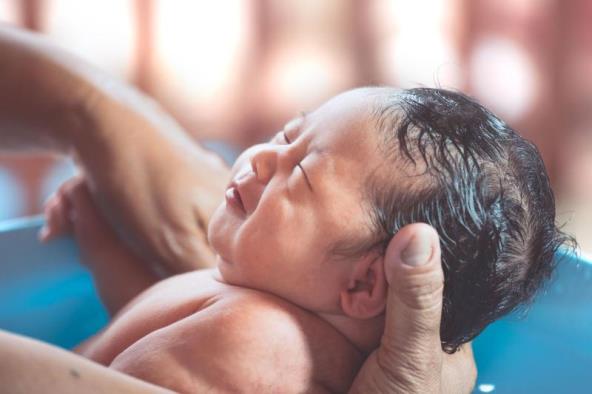
Fotograf Natali Lenard iz Saseksa u Velikoj Britaniji napravila je seriju fotografija porođaja u vodi na kojima se vide gole majke sa decom. Na fotografijama, objavljenim na njenom Instagramu, su umesto dece upotrebljene lutke.
Fotografije prikazuju majke koje su pupčanom vrpcom još povezane sa svojim 'bebama', a Natali (32) kaže da iza fotografija postoji 'dublja filozofija porođaja u vodi'.
Ideju za ovu galeriju je dobila nakon tragedije koju je doživela 2013. godine kada joj je na porođaju umro sin. Dve godine nakon toga, Natali je rodila zdravu ćerkicu. Rekla je da želi da ispriča priče svih majki i stvori pozitivne i inspirativne slike porođaja.
Porođaj u vodi se izvodi u posebnim bazenima za porođaj ili u dubokoj kadi. Smatra se da je porođaj u vodi manje bolan i smireniji od klasičnog. A žene koje su to prošle kažu da im je lakše za vreme trudova da se kreću u vodi jer ona održava majčinu težinu i smanjuje rizik od pucanja međice.
"Mnoge žene se porađaju u bazenu zato što je manje bolno, a voda im daje potporu i olakšava kretanje, zbog čega je celokupno iskustvo ugodnije", objasnila je i dodala da dosta ljudi ne zna da je porođaj u vodi siguran i da neće naštetiti bebi, budući da do trenutka rođenja bebe plivaju u amnionskoj tečnosti i da ne udišu vazduh.
"Žene već hiljadama godina rađaju pod vodom, ovaj tip rađanja koji se danas smatra normalnim je trend iz prošlog veka. Žene su nekada rađale čak i u moru, okružene delfinima", dodala je.
"Moj cilj sa ovom galerijom je da ispričam priče majki, posebno da zabeležim trenutak iskustva rođenja deteta bez uznemiravanja sa strane, kako bismo videli pozitivnije i inspirišuće fotografije", objašnjava Natali.
